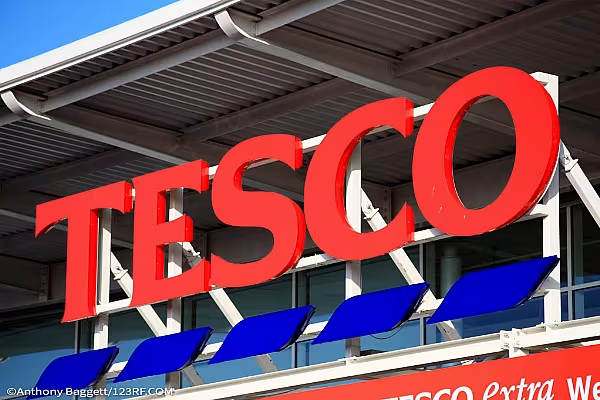British grocery giant Tesco has reported a 7.8% increase in like-for-like sales in its first half, with those in its core UK & ROI business going up by 8.4%.
“We are in a strong position to keep investing for customers, and will continue to lower prices wherever we can,” commented Tesco chief executive Ken Murphy.
Here’s how leading industry analysts from GlobalData, Shore Capital, AJ Bell and Bernstein viewed its performance.
Joe Dawson, GlobalData
“The cost-of-living crisis continues to put pressure on consumer finances, and Tesco has reacted well, maintaining low prices in line with discount competitors and passing on savings to shoppers.
“Sales in convenience formats grew 5.1%, while large stores performed especially well, with sales up 9.3%, helped by seasonal occasion-based deals and greater-value offers. Tesco has also been successful in implementing its ‘Save to Invest’ strategy, bringing down costs by removing unprofitable deli counters and increasing efficiency in stores with self-checkout machines and an optimised management structure. Further investments in price reductions on key lines at convenience stores and refurbishments at large stores to improve the customer experience and raise availability should maintain this momentum in the second half.
“As food inflation slows in the second half of the year, Tesco is set to protect its market share gains, as consumers continue to seek out good-quality products at lower prices. Clubcard promotions with deep discounts and innovative ranges will be imperative to being a first choice for consumers over the upcoming festive period.”
Clive Black, Shore Capital
“Tesco’s H1 FY24 out-turn has modestly beaten our expectations, leading the group to nicely guide to higher expectations for retail EBIT. We put through a low single-digit (3%) PBT upgrade, but if such momentum can be sustained into a gradually improving UK consumer economic backdrop, then more should follow.
“Tesco is delivering on our cash-compounding investment thesis, for which it deserves credit. On 11x FY24 PER, rating expansion should emerge, maybe substantially so.”
Russ Mould, AJ Bell
“Tesco is reaping the benefits of becoming a more competitive and well-run business. The grocery sector is cut-throat, and Tesco is managing to stay ahead of the pack by being able to offer low prices on core products while also being very clever with its loyalty scheme.
“Importantly, for the customer, Tesco has lowered prices as global commodity prices fall. That should earn it a lot of respect from shoppers. A lot of businesses will have hiked prices over the past few years, as they passed on higher costs, but then kept those prices level when cost pressures eased, which is good for their profit margins, but not exactly in the spirit of treating customers fairly.
“Online trends are interesting – the number of orders per week has increased, and so has the basket size. It has also been able to give more customers everything they ordered. One of the perils of online grocery shopping is the driver turns up with multiple substitutions, as what you wanted wasn’t available. Better stock management and having a more efficient picking operation should lead to higher service levels and greater customer satisfaction, and that is all important in the quest for customer loyalty.
“The improvement in Tesco’s banking arm performance could make it easier to sell the business if it chooses to go down that route. Earlier this year, there was speculation that Tesco might sell its financial services arm, in an effort to focus solely on its supermarkets.”
William Woods, Bernstein
“Tesco reported H1-23, beating consensus expectations on both LFLs and margin, as well as upgrading FY23 guidance. This should be received positively, given the concerns around sector profitability amidst fears of deflation – which we don’t think is a material risk. LFLs for UK & ROI came in at 8.4%, beating consensus by +14bps, mostly driven by strong retail volume, despite weather in Q2 and comping over the Platinum Jubilee.
“On margins, UK & ROI delivered a strong performance, at 4.4% – +30bps above consensus and +47bps, year on year – more than offsetting the lower margin in Central Europe.”













